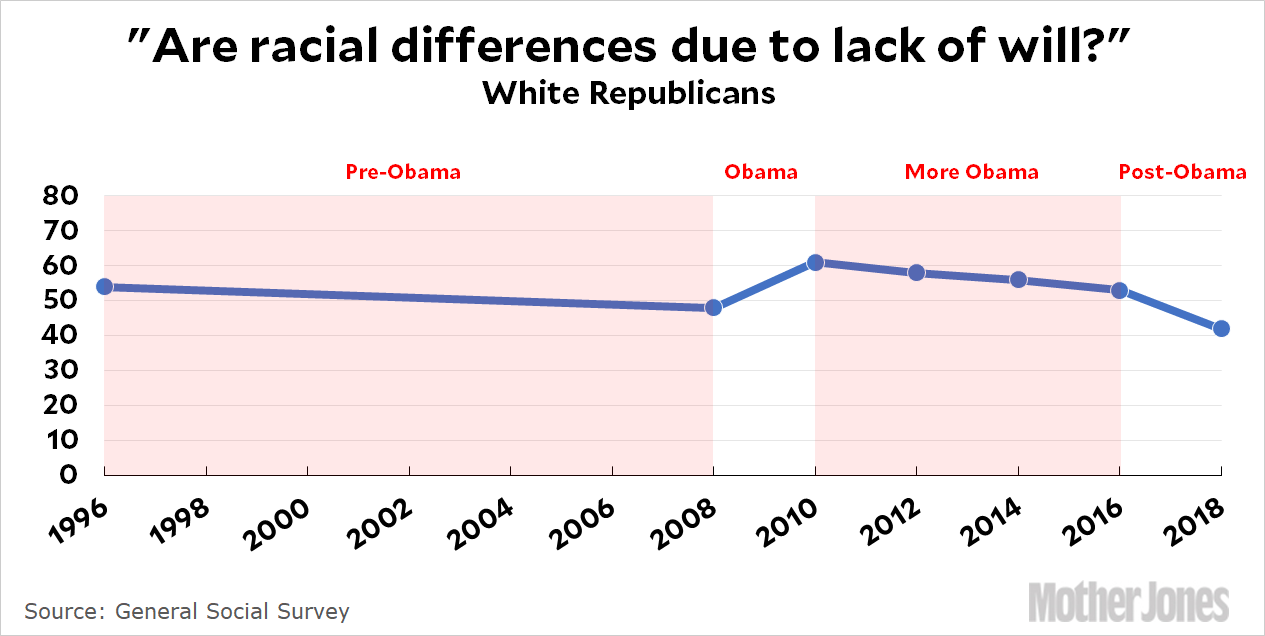Recent polling on race relations is pretty grim reading. Ever since Ferguson, both blacks and whites have agreed that race relations in America are getting worse. No matter how you ask the question, you get the same result.
But this tells us nothing about actual racial attitudes, which are notoriously tricky to measure. However, there’s a question on the biannual General Social Survey that I’ve long thought was one of the best indicators of racist attitudes: “Are racial differences due to lack of will?” This, I think, is a fairly nonthreatening way to ask about the widespread belief among some whites that blacks (and other minority groups) should quit complaining and just work harder. The responses jump around from year to year, so I’ve chosen just a few key dates in the chart below to make the trend clearer:

Among white Republicans in the pre-Obama years, the number who felt that the biggest problem among blacks was lack of willpower (LOW) was pretty steady at around 50 percent. But when Obama was elected president, LOW suddenly shot up by ten points. The mere fact of having a black man in the White House was enough to trigger feelings of racial resentment.
This faded out a bit over the next six years, but in 2016 LOW was still five points higher than it had been before Obama was elected. This is one of the things that helped Donald Trump get elected.
But look what’s happened since. With Obama gone, LOW plummeted 11 points. It’s now precisely where it would be if it had followed the pre-Obama trendline for another ten years.
This suggests that racial resentment among white Republicans has been on a steady downward trend for more than 20 years, interrupted only by the election of Barack Obama. But with Obama now out of the picture, racial resentment is way down from 2016, which means that Donald Trump has far less raw racial material to work with than he did four years ago. This doesn’t mean that Democrats can go hog-wild in the wokeness sweepstakes, but it does mean that Trump’s increasingly vitriolic racism is probably having less of an effect than we fear.
The most likely outcome of all this is that Trump will feel like he needs to go further and further to get the same response he did in 2016, and that will eventually force him to go too far. Maybe it already has. Even his fellow Republicans seem to understand the danger here, which is why they asked him to back down on the “Send her back!” chants. Trump’s base may love it, but there are a whole lot more people who are repulsed by it.













